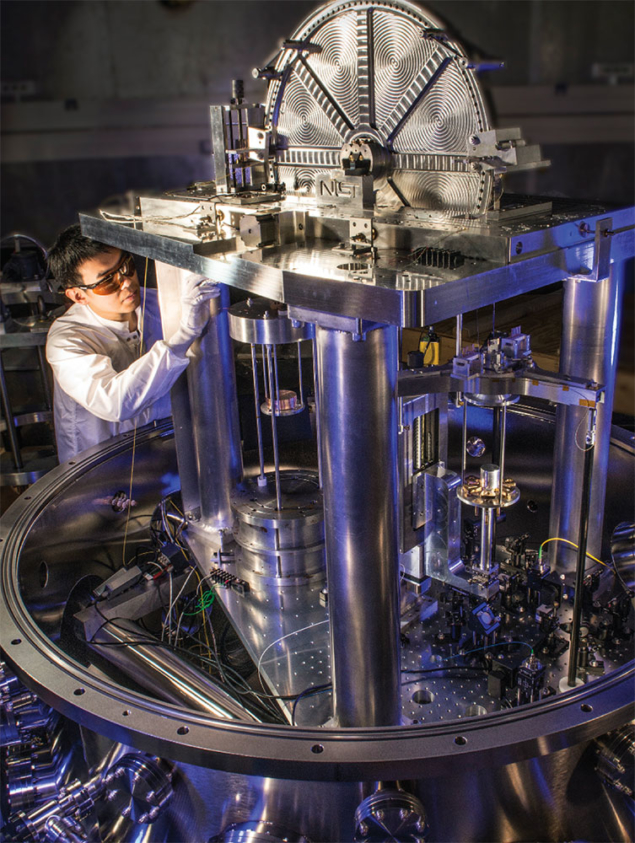
On 20 May, 144 years after the signing of the Metre Convention in 1875, the kilogram was given a new definition based on Planck’s constant, h. Long tied to the International Prototype of the Kilogram (IPK) – a platinum-iridium cylinder in Paris – the kilogram is the last SI base unit to be redefined based on fundamental constants or atomic properties rather than a human-made artefact.
The dimensions of h are m2 kg s–1. Since the second and the metre are defined in terms of a hyperfine transition in caesium-133 and the speed of light, knowledge of h allows the kilogram to be set without reference to the IPK.
Measuring h to a suitably high precision of 10 parts per billion required decades of work by international teams across continents. In 1975 British physicist Bryan Kibble proposed a device, then known as a watt balance and now renamed the Kibble balance in his honour, which linked h to the unit of mass. A coil is placed inside a precisely calibrated magnetic field and a current driven through it such that an electromagnetic force on the coil counterbalances the force of gravity. The experiment is then repeated thousands of times over a period of months in multiple locations. The precision required is such that the strength of the gravitational field, which varies across the laboratory, must be measured before each trial.
Once the required precision was achieved, the value of h could be fixed and the definitions inverted, removing the kilogram’s dependence on the IPK. Following several years of deliberations, the new definition was formally adopted at the 26th General Conference on Weights and Measures in November last year. The 2019 redefinition of the SI base units came into force in May, and also sees the ampere, kelvin and mole redefined by fixing the numerical values for the elementary electric charge, the Boltzmann constant and the Avogadro constant, respectively.
“The revised SI future-proofs our measurement system so that we are ready for all future technological and scientific advances such as 5G networks, quantum technologies and other innovations that we are yet to imagine,” says Richard Brown, head of metrology at the UK’s National Physical Laboratory.
But the SI changes are controversial in some quarters. While heralding the new definition of the kilogram as “huge progress”, CNRS research director Pierre Fayet warns of possible pitfalls of fixing the value of the elementary charge: the vacuum magnetic permeability (μo) then becomes an unfixed parameter to be measured experimentally, with the electrical units becoming dependent on the fine structure constant. “It appears to me as a conceptual weakness of the new definitions of electrical units, even if it does not have consequences for their practical use,” says Fayet.
One way out of this, he suggests, is to embed the new SI system within a larger framework in which c = ħ = μo = εo = 1, thereby fixing the vacuum magnetic permeability and other characteristics of the vacuum (C. R. Physique 20 33). This would allow all the units to be expressed in terms of the second, with the metre and joule identified as fixed numbers of seconds and reciprocal seconds, respectively. While likely attractive to high-energy physicists, however, Fayet accepts that it may be some time before such a proposal could be accepted.








